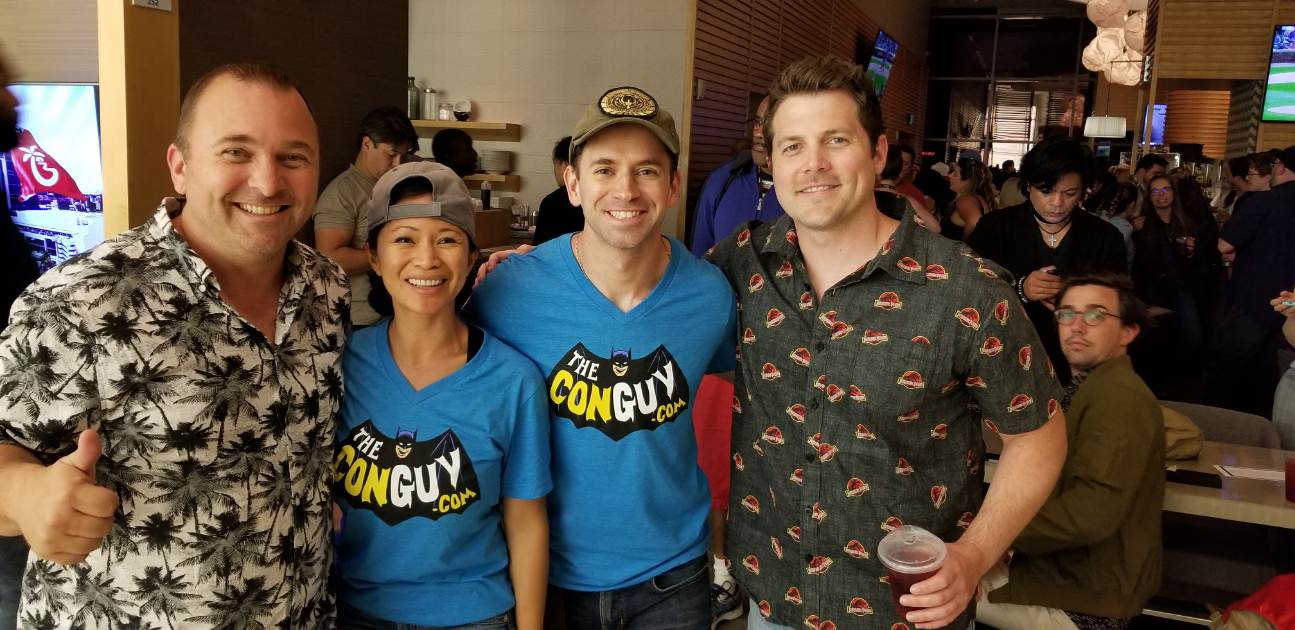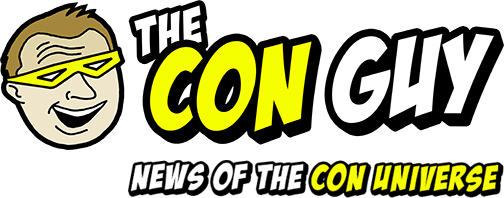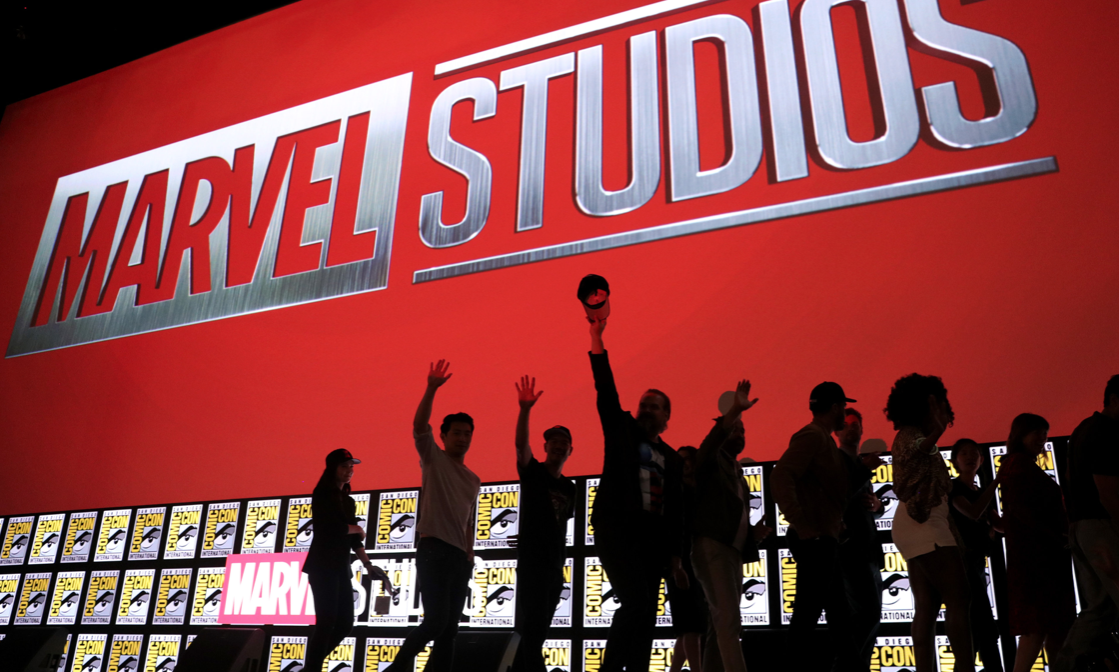I’m not gonna lie and say that for me, San Diego Comic-Con is all about business. I was a fan way before I was a screenwriter, and I’ve been a Comic-Con fanboy now for 12 years. I’ve waited in those lines, gotten those autographs, bought those collectibles, and geeked out over the latest trailers and star sightings. San Diego Comic-Con is definitely my Nerd-vana.
But it’s the business and career side of San Diego Comic-Con that keeps me invested and inspired each year. Whereas 6,500 super-fans will camp out overnight to catch a glimpse of Chris Hemsworth, there’s a much smaller (but sizeable) contingent of attendees who enroll in the 4-day Comic-Con film school, or who pitch ideas to publishing companies, or glean tips from TV writers on hit shows. And it seems that more and more independent filmmakers, screenwriters, and producers have been getting in on the Con action. Which makes total sense, because in the solar system of film and TV, Comic-Con has become one of the biggest planets.
Here are five of the best “things” for filmmakers (writers and producers) from this year’s Comic-Con.
- PANEL: The Pitching Hour. Actress and host Yvette Nicole Brown led a lively panel discussion with Deric Hughes (co-executive producer, Arrow), Lamont Magee (writer, Black Lightning), and Dan Evans (VP creative affairs, DC Entertainment), where they took a pitch from an audience member and tracked its journey from idea to production. The session included tips on creating a pitch document, getting repped, and landing a pitch meeting. In my opinion, this is one of the hardest parts in the development process. Practice makes perfect.
.

. - Networking in the Hilton Bayfront Lounge. I realized about five years ago that a big chunk of the entertainment and comic book industry gets together each night after the convention closes and just “hangs out” in the second-floor lounge of the Hilton Bayfront. It’s open to everybody but definitely more populated with people working in creative industries. What sets it apart from other networking events is that it’s smack dab in the middle of Comic-Con weekend. The vibe is different, more inviting. The room is chock full of writers, publishers, producers, animators, actors—the whole nerdy ball of wax—and they’re all eager to hear new ideas, discuss new projects, and pitch new passions. Friday night is definitely “comic book industry night,” since the Eisner Awards (the highest honors in the comics industry) are held in the same hotel just a couple hours prior. But Wednesday, Thursday and Saturday nights are a grab bag of industry folks. Bring business cards. No Comic-Con badge needed.
. - Comic Book Connection. We’re currently in the middle (or, arguably, third act) of what can be called “The Peak Comic Book Era.” Proof? Avengers: Endgame just became the biggest box-office success in Hollywood history. Marvel Studios announced 11 new projects, both TV and film, coming in the next two and half years. The CW network is comprised almost entirely of DC comics characters. And The Walking Dead—based on an immensely popular comic book series—is still one of TV’s biggest ratings champs. Hollywood is awash in comics fandom, and the two largest comics publishers—Marvel and DC—are owned by Disney and Warner Bros, respectively. That said, creating a comic book, either as a writer or as an artist, has never been more popular or attainable (but definitely not easy—success comes to those willing to put in the hard work!), and the event called Comic Book Connection helps you do just that. Screenwriters take note: Creating a graphic novel is an essential way to get attention in this “Peak Comic Book Era.” Plus, comic books are our modern myths—those of us who grew up on comics have always known this; it’s nice that everyone else is now catching on. At the Comic Connection, over 100 people—all either artists or writers—participate in a speed-dating style event. Writers pitch their ideas to an artist; artists pitch their wares to writers. Five minutes later, the writers rotate to the next artist. Then, after another five minutes, the writers move again. It’s all very fast-paced, and writers need to have their pitches down pat (those darn pitches again!). Most writers pitch to at least eight to ten artists. And this year, an all-star panel of success stories drawn from the ranks of past participants encouraged everyone to stick with it, find trusted creative partners, and make good work! Check it out—you just might make a comic book connection.
.

. - I was on a super-cool panel with five other industry professionals discussing an important topic for up-and-coming creative folks: How to have a full-time creative career on a part-time schedule. Let’s face it—it ain’t easy making that jump into full-time writer or producer. Faith, trust and pixie dust just don’t cut it. This panel—now in its 12th or 13th year—gives real-world tips and advice for people who are trying to balance the “day job” with the creative life. But what makes this panel so cool—and useful—is that for the first 10 to 15 minutes, attendees exchange business cards and make connections. Writers meet artists. Game-makers meet animators. Creatives meet creatives. And projects begin. It’s a thing of beauty.
. - 5. My Top-10 Panels. Here are 10 of the top-notch panels that writers, producers and filmed entertainment folks benefitted from: 1–The Future of Storytelling; 2–Why Good Fans Love Evil Characters; 3–What Fandoms Do When Long-Running Stories End; 4–The Real, Fake, and Ridiculous Ways Science Is Used in Film and TV; 5–How to Think Like a Cartoon Character For a Living; 6–Dynamic Story Creation: Theme; 7–Independent Filmmaking for Low Budget Film & TV; 8–Writing: Craft, Community, and Crossover; 9–Dynamic Story Creation: Point of View; 10–Tropetastic: How to Write and Subvert Tropes… Whew! that’s just the beginning.
. - BONUS! Marvel in Hall H! Let’s not pretend that we aren’t MASSIVE fans of the big studio fare on display. Well, at least most of us. Yes, I know, I know — independent filmmakers aren’t working in the same spheres as Marvel Studios, but we are inspired, entertained, and fueled by the cinematic spectacle that is Marvel. This year, they announced during their Hall H extravaganza that ENDGAME had just become the biggest box-office hit of all time. They also announced 11 more projects taking place over the next two and half years. And they brought out the talent from their films. No, these aren’t independent filmmakers…. but back in 2008, Iron Man was, essentially, an indie film. That was before Marvel was bought by Disney. And it was a MASSIVE gamble. Marvel’s success might be taken for granted by many of their fans, but it’s not taken for granted by the hundreds of dedicated filmmakers, producers, writers and creatives who work tirelessly to keep Marvel what it is today — the most successful producer of films in this generation. Maybe any generation. Marvel is nothing short of inspirational!
.
That’s not all – there are so many events, panels, and opportunities at San Diego Comic-Con for filmmakers, there’s no way to list them all right here. If you didn’t make it down to the Con this year, consider going next year. It’s almost a “must do” these days for filmmakers, both feature and TV. Professional Applications are open RIGHT NOW through mid-August. That’s your best bet for getting a badge—unless you’re lucky enough to land a spot on a panel. However, those Professional Passes are getting more and more difficult to secure—the organizers seem to be focusing more on comics-related guests and programming. But still try. General Badges go on sale early next year, but they sell out in under 45 minutes. Prayer helps. Like I said, I was a fan way before I was a screenwriter, but I’m a screenwriter because I’m a fan. San Diego Comic-Con marries those two parts of me together. I wouldn’t miss it.
For more info on all things Comic-Con and fandoms, follow us here at TheConGuy.com, and watch our Monday night video podcasts. Here’s our Comic-Con wrap-up show.

